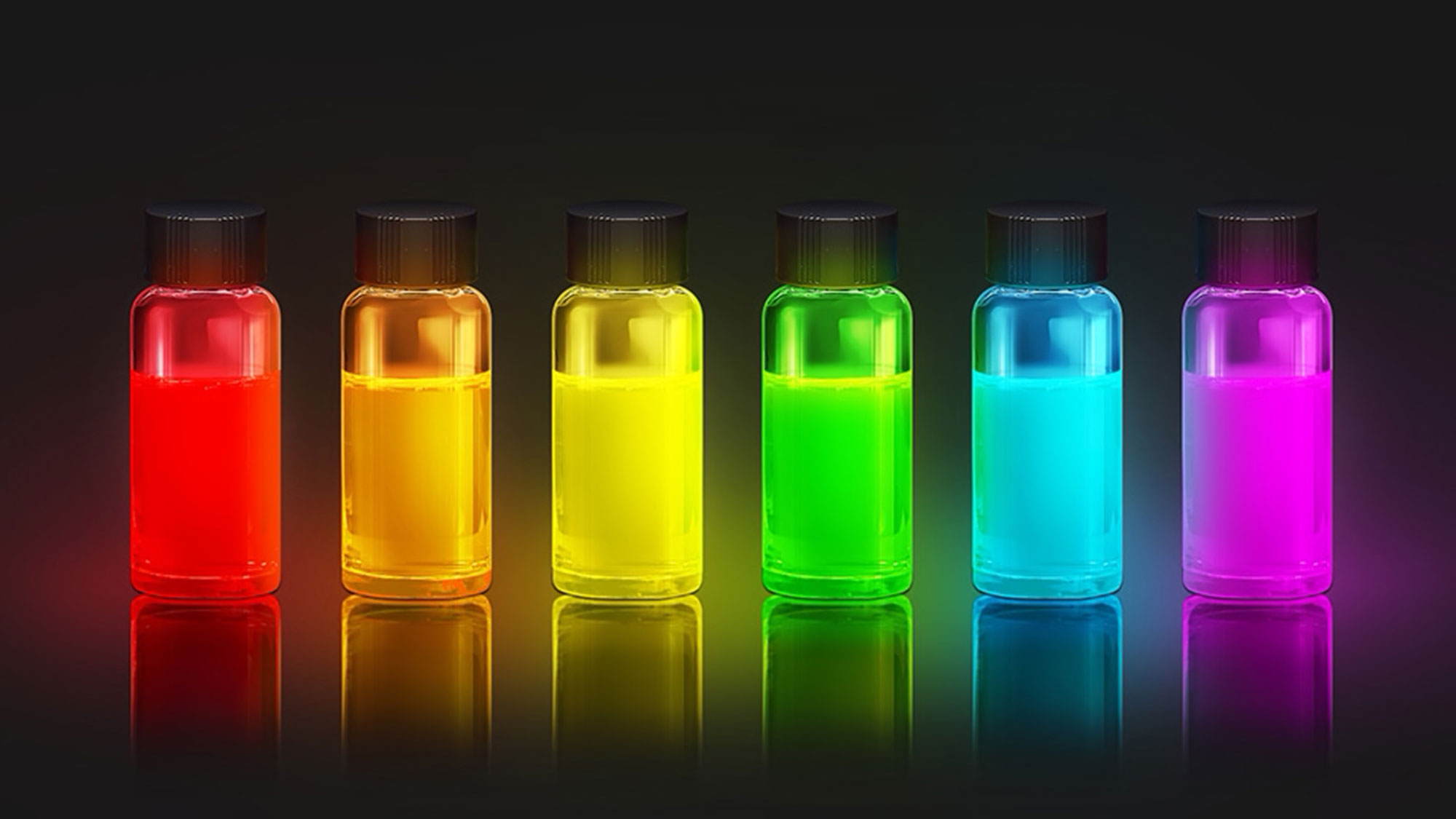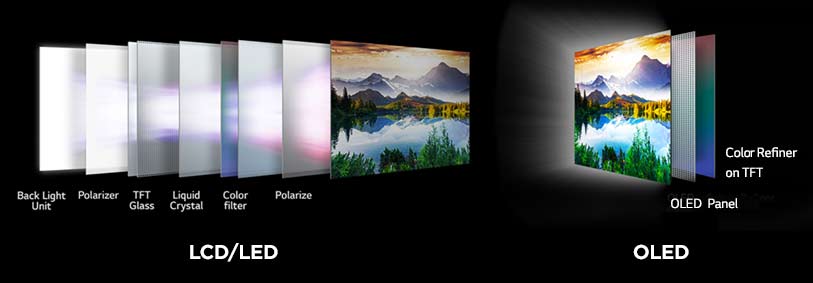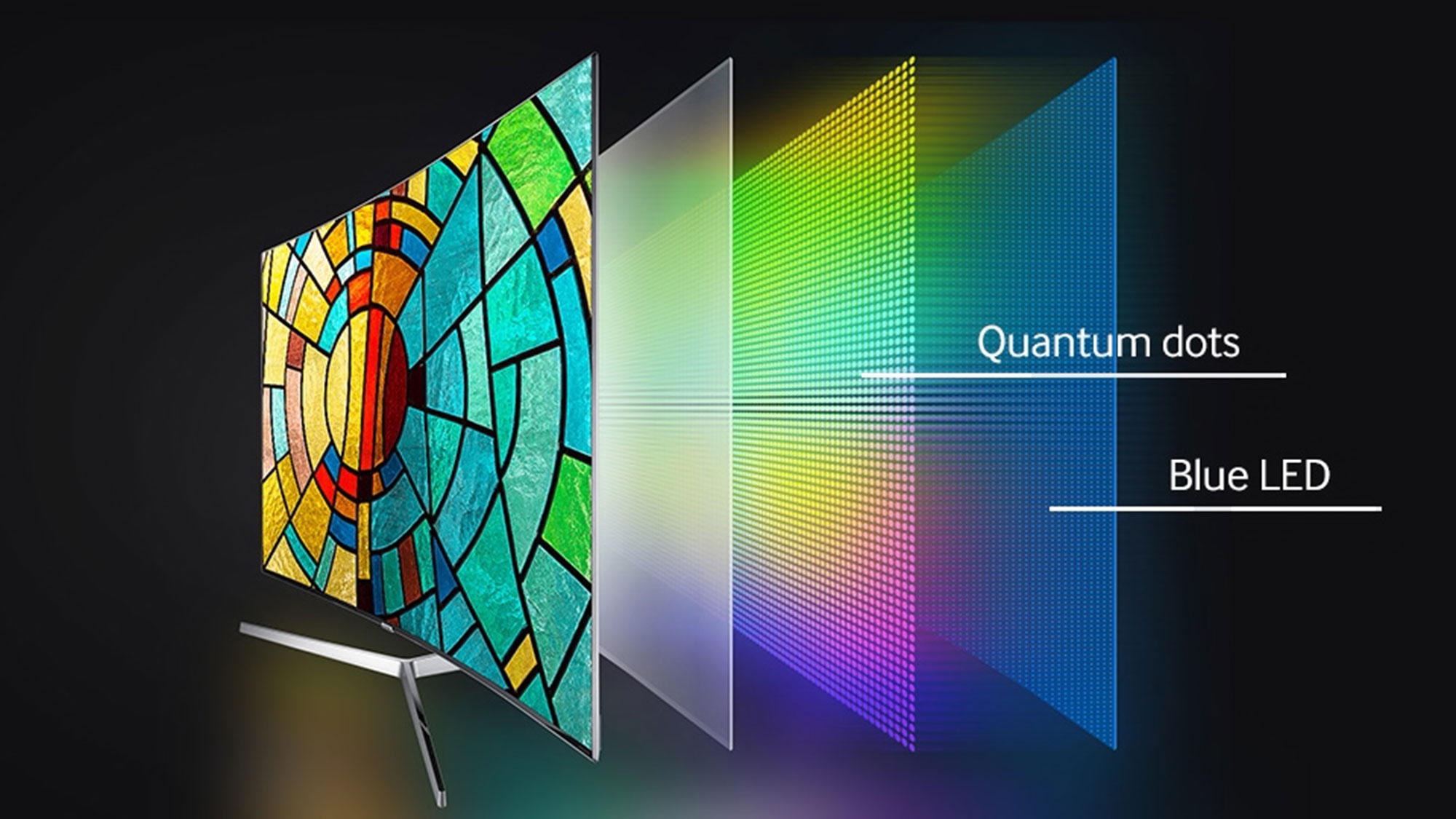What is QD-OLED? Samsung's next-gen TV display explained
Samsung's hybrid displays promise game-changing improvements

It might be tempting to dismiss Samsung’s QD-OLED hybrid display technology and as marketing spin. After all, TV makers are always on the lookout for the next big thing, whether it's higher resolution, new smart features, or more transparent gimmicks, like 3D TVs and curved screens. Whatever gets TV shoppers buying new TVs, some TV maker will latch onto it.
But Samsung has recently been investing heavily in new TV technologies, developing ways to make TVs better, and not just more marketable. In recent years, it's been the introduction of the first 8K TVs and the development of micro-LED displays. And while these are still unproven, forward-looking technologies, Samsung hasn't stopped there. That brings us to QD-OLED, which combines aspects of both Samsung QLED TVs and the OLED displays used by competitors like LG and Sony.
The resulting QD-OLED technology promises big things for the TV world, and rumors have started swirling that Samsung's first QD-OLED TV could arrive as early as next year. We've had our eye on the new technology for some time — I first wrote about it back in 2019 — but it's looking like Samsung is closing in on the first QD-OLED TVs.
At CES 2022, we also got a feel for how Samsung's new QD-OLED displays could shape the upcoming TVs of the year.
So, for anyone else that's waiting for the hybrid TVs as eagerly as we are, here's everything we know so far about Samsung's game-changing QD-OLED TVs.
What is QD-OLED?
QD-OLED is a hybrid technology that combines quantum dots and OLED panels. By combining the two technologies, Samsung is hoping to crack the code for perfect displays.
The ideal for modern picture quality would combine brilliant color, true blacks and high brightness without any haloing. Current OLED technology handles black levels and pixel-perfect illumination better than any other technology, but it struggles to deliver the brightness and life-like color that LCD panels produce. QLED TVs, on the other hand, can drive powerful backlights for unbeatable brightness and superb color, but without OLED's per-pixel illumination, backlighting will always be less controlled.
Sign up to get the BEST of Tom's Guide direct to your inbox.
Get instant access to breaking news, the hottest reviews, great deals and helpful tips.
Samsung has been developing the technology for years, but has not yet announced any products featuring the new technology. However, industry reports suggest that the first Samsung QD-OLED TVs could launch as soon as next spring.
How does QD-OLED work?
Samsung's hybrid QD-OLED technology combines the best aspects of two major innovations in display technology, pairing the crispness and pixel-perfect contrast of OLED with the boosted brightness and expanded color that quantum-dot technology delivers. The result is a best-of-both-worlds display that offers the impeccable quality of OLED without sacrificing the superior brightness and color that QLED TVs offer.
To understand how that will work, we need to look at each technology individually.

How QLED works
Quantum dot technology uses microscopic crystals that have the curious property of glowing under certain wavelengths of light, emitting their own light at certain wavelengths. They also function as semiconductors, so they can be individually turned on and off. When paired with a separate light source — the LED in QLED refers to the TV's LED backlight — these little nanometer-sized crystals not only glow, they produce color based on the size of the crystal.
Samsung has harnessed these glowing quantum dots to create TVs with better color and brightness than a traditional LCD panel can provide, and the technology has since been adopted by other manufacturers. By combining these color boosting quantum dots with a standard LCD panel and specialized color filters, QLED TVs can deliver the best brightness and most vivid colors available in modern TVs.
And don't expect traditional quantum-dot displays to go anywhere just because Samsung is cooking up something new. Samsung's QLED TV line will likely be around for years to come, and competitors like TCL, Hisense and Vizio have all adopted similar quantum-dot enhancement for their own TVs. (Check out the best QLED TVs for our favorites.)

How OLED works
OLED uses organic compounds – electroluminescent materials like organometallic chelates, p-phenylene vinylene and N-vinylcarbazole, not biological material – that light up individual pixels. These compounds can be printed directly onto glass, allowing for the thinnest TV screens available.
But inkjet printing exotic compounds to create the millions of pixels used on a single TV is difficult — difficult enough that LG has faced very little competition in manufacturing TV-sized OLED panels. Even competitors like Sony and Vizio use LG panels for their own OLED TVs. That makes LG's OLED technology the de facto standard, and any improvement Samsung can offer will effectively leapfrog the entire OLED TV industry.
LG's OLED technology is technically called WRGB OLED, because it uses white OLED as the primary light source, with additional color filtering that adds red, green and blue to each pixel. Because each pixel's light source can be turned on and off, this allows OLED TVs to deliver true black, and to illuminate only the pixels that are supposed to be lit. As a result, OLED has consistently delivered the best picture quality in modern TVs.
However, because the TV uses those self-lit pixels instead of a powerful backlight, the brightness is limited to what the OLED white pixel can produce, and not all of that light is projected forward toward the viewer. The perceived brightness is then further limited by the addition of the color filters that give each pixel its color. That results in dimming, and less vibrant color overall.
LG and other manufacturers have been working to improve OLED brightness by adding additional elements to the pixel structure, and by driving the white pixels harder to deliver better brightness, but those fixes often result in shorter lived displays, and increase the risk of burn-in.
The best of both worlds: QD-OLED

By pairing the per-pixel control of OLED with the light- and color-boosting qualities of quantum dots, Samsung is hoping to get the best qualities of these two leading TV technologies.
From what's known about Samsung's hybrid technology, QD-OLED uses blue OLED emitters instead of white, but instead of filtering that light to create colors, it uses it to trigger the vivid glow of quantum dots to generate the different colors that make up individual pixels. The combination of the two should deliver amazing brightness without the inefficiencies of current WRGB OLED.
The resulting displays are also expected to be thinner than any current QLED or LCD panel, but slightly thicker than current OLED, since it does require that extra layer of quantum dots.
What are the benefits of QD-OLED?
Not only does QD-OLED technology promise to deliver potentially the best picture quality of modern TVs, there are other huge benefits that could come from the new type of displays.
First, the boosted brightness offered by QD-OLED could result in more efficient displays, giving you a TV with a better picture, but also one that uses less power.
Quantum dots also aren't prone to the same burn-in issues that the organic compounds of OLED are, making for displays that last years longer than current OLED models.
The new technology could also come in at a lower price than traditional OLED panels, which are among the most expensive in the TV category. Still, the first round of QD-OLED TVs will surely be expensive – new technologies cost more to produce, initially, and it's not unlikely that the first Samsung QD-OLED TVs will cost as much or more than Samsung's pricey 8K TV line.
But OLED prices have dropped considerably over the eight years since the first OLED TV sold for nearly $10,000. With current top picks like the 65-inch LG G1 OLED selling for $2,499, that's a 75% drop in less than a decade, and you'll still get LG's best OLED TV. With the addition of some real competition from a major player like Samsung, prices of both OLED and QD-OLED should drop even more.
When will we see QD-OLED TVs?
According to a recent report from South Korea's The Korea Economic Daily, Samsung is prepping the first of its new QD-OLED TVs for the first half of 2022. According to industry sources, the report suggests that 55- and 65-inch models will come first, with a 70-inch option coming later in the year.
If there's anything to this rumor, we suspect that Samsung will be formally announcing the first QD-OLED TVs during CES 2022, which takes place just after the new year. The show has been a popular event for major product announcements, including Samsung's biggest reveals of the last several years, from the first 8K and MicroLED TVs to the latest Neo QLED models.
If past product launches are any indicator, we would expect the announcement to be followed up by the new QD-OLED sets going on sale in March or April of 2022, but new technologies don't always follow the standard launch cycle for mainstream TVs.
What will QD-OLED TVs be called?
The term QD-OLED has been the main one used for the new display technology over the last few years, but it's unlikely that Samsung will use that in the name. Much like Samsung's Neo QLED TVs, which added mini-LED backlight to existing QLED technology, Samsung will likely use a new, easily trademarked name for the technology.
Recent material from Samsung Display — the portion of Samsung that makes the panels that will be used in TVs, which come from Samsung Electronics — uses the term "QD display" instead of QD-OLED. It's possible that Samsung Electronics will use the same term in its branding, but probably not.
That's all a long way of saying that we may not learn what Samsung is going to call the new QD-OLED TVs until the company makes an official announcement, or perhaps leaks the news early. (We'll be there to cover it either way.)
What will QD-OLED TVs cost?
Returning to the recent report from South Korea's The Korea Economic Daily, Samsung is planning to position the new QD-OLED TVs "between its top-premium segment of MicroLED TVs and its flagship QLED lines."
That's a pretty wide range of prices, from tens of thousands of dollars for the MicroLED, and the Editor's Choice Samsung Neo QLED QN90A, the top 4K model, which starts at $1,799 for the 55-inch model.
It's obviously hard to pin down something that ranges from $1,799 to $99,999, but I think it more likely that QD-OLED would fall a little north of what Samsung charges for its top 8K Neo QLED set, which sells for $3,999 for the 65-inch model.
All told, I'd expect something around $5,000 for the 55-inch model, and $6,000 for the 65-inch version. Time will tell if we're right, but we'll update this whenever pricing information is announced.
Is anyone else making QD-OLED?
While Samsung has thrown its money and resources into developing QD-OLED technology, it's not the only player in the TV world that's looking to combine OLED and quantum dots.
Reports from OLED-info.com suggest that Chinese manufacturer TCL is hard at work on what it calls H-OLED, which also would use a blue OLED emitter layer with red and green quantum dots on top to great multicolored pixels, similar in many respects to what we know about Samsung's technology.
Brian Westover is currently Lead Analyst, PCs and Hardware at PCMag. Until recently, however, he was Senior Editor at Tom's Guide, where he led the site's TV coverage for several years, reviewing scores of sets and writing about everything from 8K to HDR to HDMI 2.1. He also put his computing knowledge to good use by reviewing many PCs and Mac devices, and also led our router and home networking coverage. Prior to joining Tom's Guide, he wrote for TopTenReviews and PCMag.
-
Some French Guy In your article you mention that QD-OLED won't suffer from burn in like OLED does. But since QDs will simply be replacing traditional OLED's color filters/OLED will serve as QD's "backlight" replacement (depending on how you see it), OLED elements are still the core of the technology, and are still organic. How will simply replacing the colour filter with quantum dots prevent any kind of burn in?Reply
Unless I'm missing something, (maybe quantum dot emissive properties mean the OLED "backlight" has to work less hard to produce a brightness equal to traditional OLED), this claim makes no sense...
I'll be waiting for reviews. I never saw OLED brightness to be an issue in practice on my LG C1, so QD-OLED seems like a gimmick to me at this point.

